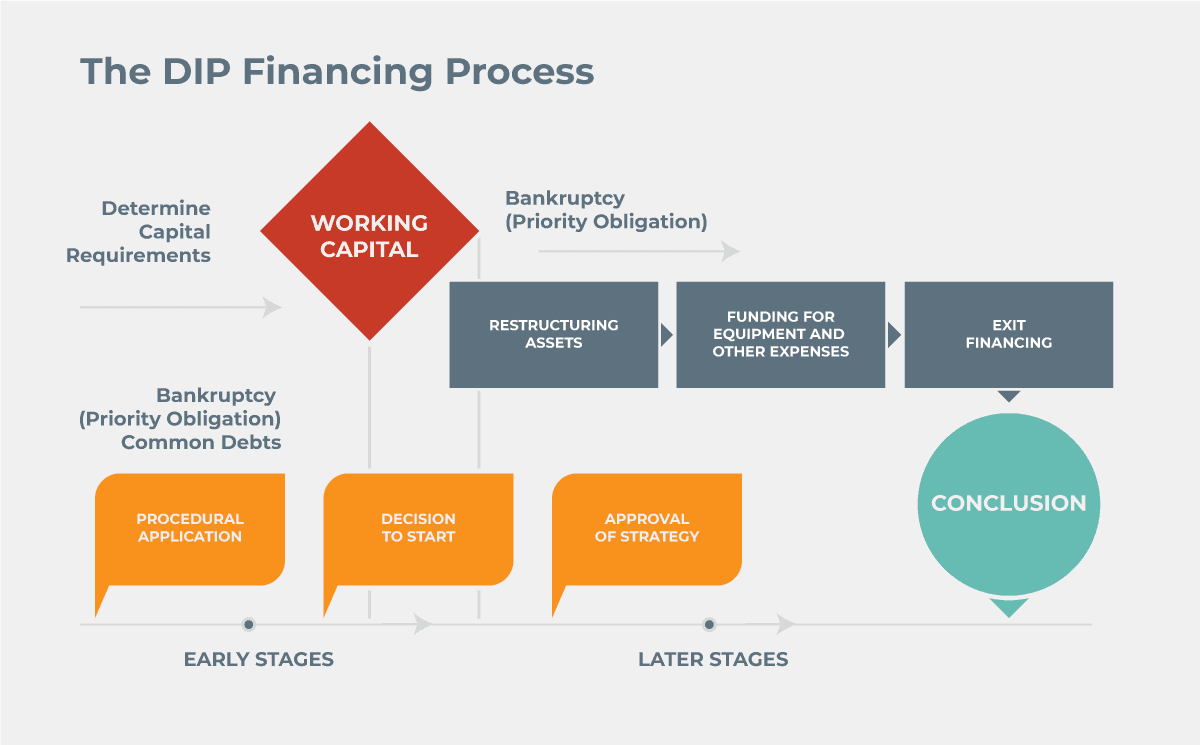
DIP Financing Can Help Turn a Company Around Following Bankruptcy
Content
Businesses in financial distress usually find that sources of new funding shrink just when they need it the most. The ability to obtain further advances from current lenders may be cut off. The business may also fall into default. This is where debtor-in-possession (DIP) financing can help.
If a company files for Chapter 11 bankruptcy protection, it may be able to take advantage of DIP financing. DIP financing can help a company reverse course, give it restructuring support and return to profitability.
What is debtor-in-possession (DIP) financing and how can it help?
DIP financing is funding provided to businesses that have filed for Chapter 11 bankruptcy protection from creditors. It’s typically available to companies where lenders believe the company has a credible chance and a viable plan to turn itself around. It is not available to firms that simply want to liquidate the company. A post-petition lien is created after filing.
The term debtor in possession refers to the fact that the current management and board of directors remain in possession of the business following its Chapter 11 bankruptcy filing. Business owners may not be aware that they can obtain financing to turn their company around after declaring bankruptcy.
Many lenders see DIP financing as a compelling lending opportunity because of the special treatment that business bankruptcy loans receive under U.S. bankruptcy law. Under the law, DIP creditors must receive the payment before other creditors. Many lenders will commit to a DIP Chapter 11 loan while they would not make a loan commitment to the same business in the absence of a bankruptcy filing.
What is the process in DIP financing?
In DIP restructuring finance, the assets pledged as collateral must be sufficient to cover the business bankruptcy loan. Here’s how the DIP Chapter 11 loan process works:
- When the company locates a lender that is willing to finance its turnaround, the company seeks approval from the Bankruptcy Court.
- Standard DIP financing terms include a “priority” security interest in the collateral, a market-rate or even premium rate of interest, an approved budget and other related lender protections. Creditors may object to the loan if they feel they will be made worse off.
- The Bankruptcy Court will be the one to decide whether to approve the loan or not.
If a company in Chapter 11 bankruptcy has existing secured loans and wants to borrow on a secured basis that is equal or senior to the existing loans:
- It will need to obtain consent from the current lender(s) for the new loan.
- It will have to convince the Bankruptcy Court that the existing lender(s) will be adequately protected, and they will not be made worse off by the new loan.
A current lender who provided financing to the firm before its bankruptcy filing may be willing to commit to a DIP business bankruptcy loan, even if it has declined to make further advances before the bankruptcy proceeding. In addition to the added protection under the Bankruptcy Code, the lender may also have its own goals in creating the DIP loan. For example, to help improve the company so that it can ultimately be sold to another party.
If the Bankruptcy Court approves a DIP loan and finds that it was made in good faith, the credit will not be subject to legal challenge. That differs from the same loan made outside of bankruptcy, which might have been subject to legal challenge.
How is accounts receivable factoring used in DIP financing?
Companies can also use factoring as a financing tool in DIP financing. Accounts receivable financing can be one of the most flexible ways to obtain funding and recapitalization during the Chapter 11 bankruptcy process. Factoring can be a win-win for both the borrowing company and the factoring firm. The borrower receives needed funding that is not based on its credit status, and the factoring firm achieves priority status under the Bankruptcy Code.
What is the difference between exit financing and DIP financing?
DIP financing is part of a company’s Chapter 11 bankruptcy working capital strategy. The funding is available while the company is going through a reorganization, hoping to eventually come out of bankruptcy with a stronger balance sheet and a plan to move forward. In contrast, Exit financing is the company’s post-bankruptcy funding package. In smaller deals, lenders often negotiate and commit to a debtor-in-possession and an exit facility at the same time. This is known as a “DIP rollover.”
The bottom line
If your company is experiencing financial distress, it is important to consult an experienced bankruptcy attorney and restructuring or turnaround specialist to determine your viable options. You may be able to do a workout or other restructuring process outside of bankruptcy. However, if you determine that Chapter 11 bankruptcy is your best option, DIP financing may provide a strong opportunity to help turn your company around.
ABOUT eCapital
Since 2006, eCapital has been on a mission to change the way small to medium sized businesses access the funding they need to reach their goals. We know that to survive and thrive, businesses need financial flexibility to quickly respond to challenges and take advantage of opportunities, all in real time. Companies today need innovation guided by experience to unlock the potential of their assets to give better, faster access to the capital they require.
We’ve answered the call and have built a team of over 600 experts in asset evaluation, batch processing, customer support and fintech solutions. Together, we have created a funding model that features rapid approvals and processing, 24/7 access to funds and the freedom to use the money wherever and whenever it’s needed. This is the future of business funding, and it’s available today, at eCapital.


